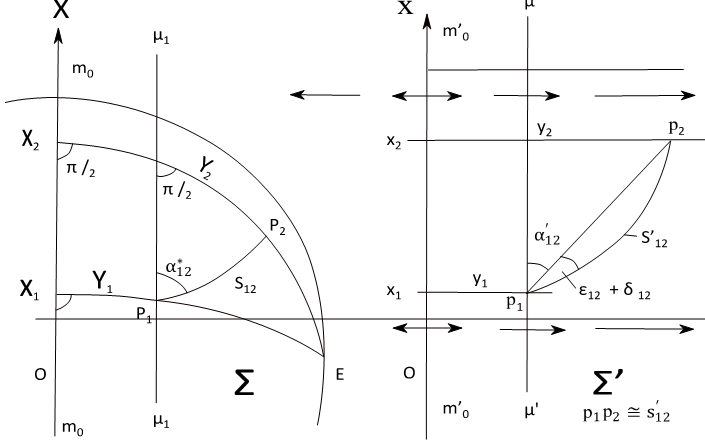La modifica delle equazioni di Soldner per l’esecuzione dei calcoli geodetici in coordinate di Gauss nell’ambito del campo sferico - parte 1: principi teorici
Abstract
Il presente lavoro trae origine da considerazioni di trigonometria sferica la quale, ricordiamo, definisce le relazioni esistenti tra i lati e gli angoli di un triangolo sferico.
Al riguardo, le equazioni di Soldner, che si fondano proprio su teoremi di trigonometria sferica, mettono in relazione le coordinate geodetiche rettangolari di due punti della sfera, quando siano conosciute la lunghezza della linea geodetica che li unisce e l’azimut piano da questa formato nel primo dei due vertici considerati. Nel suddetto sistema di coordinate trovano quindi soluzione i due problemi fondamentali della geodesia.
Le citate equazioni trovano generale impiego nella rappresentazione di Cassini-Spoldner, dove le coordinate geodetiche rettangolari coincidono con le coordinate plano-cartografiche, poiché consentono di risolvere i problemi geodetici senza dover passare per il calcolo del modulo di deformazione lineare, nonché della riduzione alla corda e della deformazione angolare (la suddetta rappresentazione infatti non è conforme).
La modifica delle equazioni di Soldner, proposta in questo studio, permette di applicare la medesima modalità operativa, quando occorra affrontare gli stessi problemi geodetici, utilizzando il sistema di coordinate di Gauss. In quest’ultimo caso, poiché la larghezza dei fusi supera di molto quella del campo sferico, le formule di Soldner possono cadere progressivamente in difetto, quando si operi a notevole distanza (maggiore di 180km) dal meridiano centrale e quindi per mantenere immutato il rigore dei risultati è necessario diminuire la lunghezza della linea geodetica rispetto a quella ammessa nel campo sferico.
A questo documento segue una seconda parte dedicata ad applicazioni numeriche e complementi di quanto qui trattato.
Downloads

Downloads
Pubblicato
Come citare
Fascicolo
Sezione
Licenza
Copyright (c) 2021 Sabatino Di Filippo (Autore)

Questo lavoro è fornito con la licenza Creative Commons Attribuzione - Condividi allo stesso modo 4.0.



